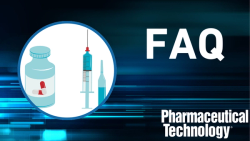
OR WAIT null SECS
- About Us
- Advertise
- Contact Us
- Editorial Info
- Editorial Advisory Board
- Do Not Sell My Personal Information
- Privacy Policy
- Terms and Conditions
© 2025 MJH Life Sciences™ , Pharmaceutical Technology - Pharma News and Development Insights. All rights reserved.
Phase-Appropriate Formulation and Process Design
Appropriate use of sound science applied at critical junctures will improve efficiency in the high-wire act of drug development.
Pharmaceutical companies walk a tightrope in early drug development. They have to balance speed, quality, scientific risk, and API cost. Compromising on any one of these four crucial elements can prove fatal to a product candidate.
While advancing from preclinical through Phase II trials as quickly as possible, developers must make a number of important decisions about product formulation and process design. Over-engineering a Phase I or Phase II drug that ultimately fails in the clinic could be a costly waste of resources. Neglecting sound science during early formulation and process development, however, could mean that a promising Phase II drug poised to enter Phase III trials may not have a manufacturing process that is scalable or commercially viable.
The competitive and hard-changing healthcare market certainly demands expeditious and efficient drug development from pharmaceutical companies. Key stakeholders (e.g., shareholders, senior management, and board members) want a “go/no go” decision at the earliest possible stage. Every single product candidate, however, requires an investment in formulation and product design just to reach a point where its clinical and commercial potential can be evaluated.
A key milestone occurs when preliminary evidence of efficacy in a relevant patient population becomes available, typically during or immediately after Phase II trials. A study in Nature Biotechnology showed that slightly more than two-thirds (68%) of experimental compounds fail at this pivotal Phase II juncture. Failure rates are 35% and 40% for Phase I and Phase III compounds, respectively (1). For the roughly one-third of Phase II candidates that do advance, a scalable and commercially viable manufacturing process and formulation must already be in place or costly, game-changing delays could arise.
All drug developers--from virtual and small firms through mid-sized and top-20 pharmaceutical giants--face the same challenge of being prepared to develop their fraction of viable product candidates efficiently no matter their business models or exit strategies for an asset. The following strategies can help companies navigate the drug development tightrope and advance product candidates with maximum efficiency:
Practice sound science and build in quality from day one
Although FDA and the European Medicines Agency (EMA) introduced pharmaceutical quality by design (QbD) in international guidelines more than five years ago, most drug developers remain unaware that the real benefits of sound science go beyond smoothing the regulatory pathway. A science- and risk-based approach to drug development and manufacturing, QbD is an opportunity to add value by building quality into products and thereby gaining a business advantage. It is not a mere line item expense.
Adopting a QbD approach at the formulation design stage has become essential as iterations toward the target product profile are minimized, and the overall risk to the project is reduced (see Figure 1). Other best
practices that create value and mitigate risk include statistical design of experiments (DoE), a branch of applied statistics that deals with planning, conducting, analyzing, and interpreting controlled tests; and failure mode and effects analysis (FMEA), a systematic, proactive method for evaluating a process to identify where and how it might fail and how to correct the problems.
For example, FMEA can provide a rigorous up-front “set-up” of problems. Relying on the unbiased analyses enabled through FMEA experimentation and modeling, issues surface that are not limited to ones that could have been predicted based solely on experience. By identifying and correcting the root causes of problems early in the design phase of the process- and product-development cycle, companies can cut the risk of later stage quality, yield, and supply-chain issues.
Two recent cases highlight the hazards of neglecting the scientific method
A drug company recently developed a tablet formulation for a large-dose antiviral drug. The formulation had a high drug loading. The formulation and process development was performed at an approximate scale of 10 kg. The process worked for this scale of operations as the run time for compressing the tablets was short. To supply enough product for pivotal clinical trials, however, the process had to be scaled up hastily to approximately 300 kg. However, a systematic scale-up study was not performed and critical process parameters (CPPs) were not identified. Despite the risks, the process was scaled up to 300 kg.
During compression of the tablets at 300 kg, granules adhered to the tooling, and the tablets could not be compressed after the initial run. An investigation revealed that the granules had a sticking tendency and formed a film on the tablet turret and tooling. Also, the materials could not be compressed at higher speeds of compression. A systematic DOE study of the compression behavior, compressibility, and speeds of compression at a pilot scale would have identified the problem, and the issue could have been addressed by formulation, process, or engineering solutions.
Another company formulated a potent drug substance into a low-dose, solid oral tablet. The process involved direct blending and compression. As the formulation had an extremely low percentage of API, the blend and content uniformity of the API were crucial. But the Phase II formulation and process was scaled up to approximately 150-200 kg without proper process understanding or risk assessment. When that happened, the batch no longer met the necessary criteria for blend uniformity or content uniformity. A systematic study of the impact of particle size distribution of the API in the blend, or particle size of other major excipients, would have been invaluable to identify the CPPs. A study of the influence of various blending times on the blend and content uniformity could have helped to better characterize the material properties, as well as process parameters.
Even small companies--where the exit strategy is to out-license an asset at Phase I or Phase II--will profit from the QbD toolkit. In recent years, diligence conducted on acquisition targets increasingly includes a thorough chemistry, manufacturing, and controls (CMC) review, in addition to a clinical efficacy review. Licensees are well aware that many products fail late in development due to CMC deficiencies and/or an unfavorable cost of goods profile, a reason why CMC experts are now at the table in licensing negotiations.
Companies that offer QbD-generated data demonstrating knowledge of the drug substance, its physicochemical properties, characterization, raw material and excipient interactions, and variability--and how these all affect the dosage form design, target product profile, and shelf-life stability--often can realize a premium on deal terms. Conversely, companies that develop assets using short-term, seemingly cheaper methodologies may be forced to accept less rewarding terms for valuable assets.
Gated reviews assess risk
Developers must perform cross-disciplinary analyses at regular checkpoints to assess the scientific, clinical, regulatory, and commercial risks for a given product, and their strategies may need to change as a result of these reviews. Gated reviews that build in quality and bring science to the table offer advantages to all companies.
The window between Phase II and Phase III is crucial. For example, one company recently had a stellar, small molecule lipid-lowering compound that in several head-to-head Phase II studies showed promising clinical superiority over existing therapies. Poised to enter a highly competitive cholesterol-lowering market estimated to be worth more than $100 billion, the company developed its drug quickly. Clinical trials were supplied with a batch production process optimized for small- and intermediate-scale manufacturing.
Now the company needs to conduct two much larger, global Phase III clinical efficacy trials simultaneously, plus a 5000-patient long-term safety study; the firm is struggling to produce the larger batch sizes needed for the Phase III study. This wholesale process change could mean that regulators will require the reformulated drug to start all over again at Phase I.
The moral of this cautionary tale? Phase II development is the correct point at which to evaluate the scalability of manufacturing processes and the potential regulatory impact of any changes, not the brink of launching Phase III. In cases where a product’s formulation needs tweaking prior to a Phase III trial, a bridging study can be conducted to demonstrate pharmacokinetics equivalency between the old and new products.
Apply the right standards and-product upgrades at the right time
Over- or under-engineering a product for its stage of development is a common, costly error. The key is to understand phase-appropriate specifications. For example, a Phase I product can have impurity levels, stability limitations, and in vitro dissolution release profiles that are markedly different (and significantly looser) than commercial products. Similarly, formulating a product with a three- to four-year shelf life for a Phase I trial is an obvious waste of resources.
Phase II products also can have looser specifications. Performance standards, however, will tighten by Phase III and launch. For example, for a controlled-release drug, an acceptable release profile might be to deliver 30-60% of drug within 4-6 hours (note the 30% delta). By Phase III, the release criteria for the same drug could be tightened to release 40-50% of drug in 4 hours, with assurances to regulators that these will be the final batch-to-batch quality specifications. By the time this drug hits the market, it will fail quality tests if it releases, say, 36% at 4 hours, instead of 40%. That’s how tight the margins could become with justification.
With a control strategy grounded in systematic scientific evaluations including gated reviews (see Figure 2), specifications can be tightened in a stepwise fashion as a product advances from Phase I to Phase
III to launch. Through early integration of science in formulation and process development, companies can create a detailed technical transfer plan, bringing on new equipment capabilities as required, and ensuring plant availability to deliver when requested. As standards are adopted throughout the development process, from formulation through commercial manufacturing, a firm gains the ability to choose options at each stage that are both fit for purpose and best in class.
Science-driven formulation reduces risk and creates lasting value
Use of sound science appropriately applied at critical junctures is the only sure route to improve efficiency in the high-wire act of drug development. QbD and other scientific tools should be viewed as opportunities that deliver benefits to patients, in the form of safe, effective drugs, and to companies, in the form of quality products that will generate value throughout their lifecycle. Phase-appropriate, science-driven formulation and process design:
- Adds value to an asset and boosts return on investment for every business model and exit scenario
- Mitigates risk at every stage of development
- Allows for efficient success and (often as importantly) efficient failure
- Minimizes iterations from pilot product to target product profile
- Reduces the probability of regulatory delays by providing justification for all CMC decisions
- Creates the ability to tighten product standards in a stepwise fashion.
In today’s hypercompetitive healthcare market--populated by increasingly sophisticated buyers of both approved and experimental drugs--companies can no longer afford to reduce costs by skimping on science, which raises the risks of drug development to an unsustainable level. Rather, the solution is to build a science-based foundation of quality into products and processes and then layer on ever-tightening standards and upgraded features appropriately as a drug wends its way toward market.
Reference
1. M. Hay et al., Nat Biotechnol. 2014 Jan;32(1):40-51. doi: 10.1038/nbt.2786. Supplemental Info: www.nature.com/nbt/journal/v32/n1/extref/nbt.2786-S1.pdf
Article DetailsPharmaceutical Technology
Vol. 40, No. 1
Pages: 42–46
Citation:
When referring to this article, please cite it as A. Kane, "Phase-Appropriate Formulation and Process Design," Pharmaceutical Technology 40 (1) 2016.



